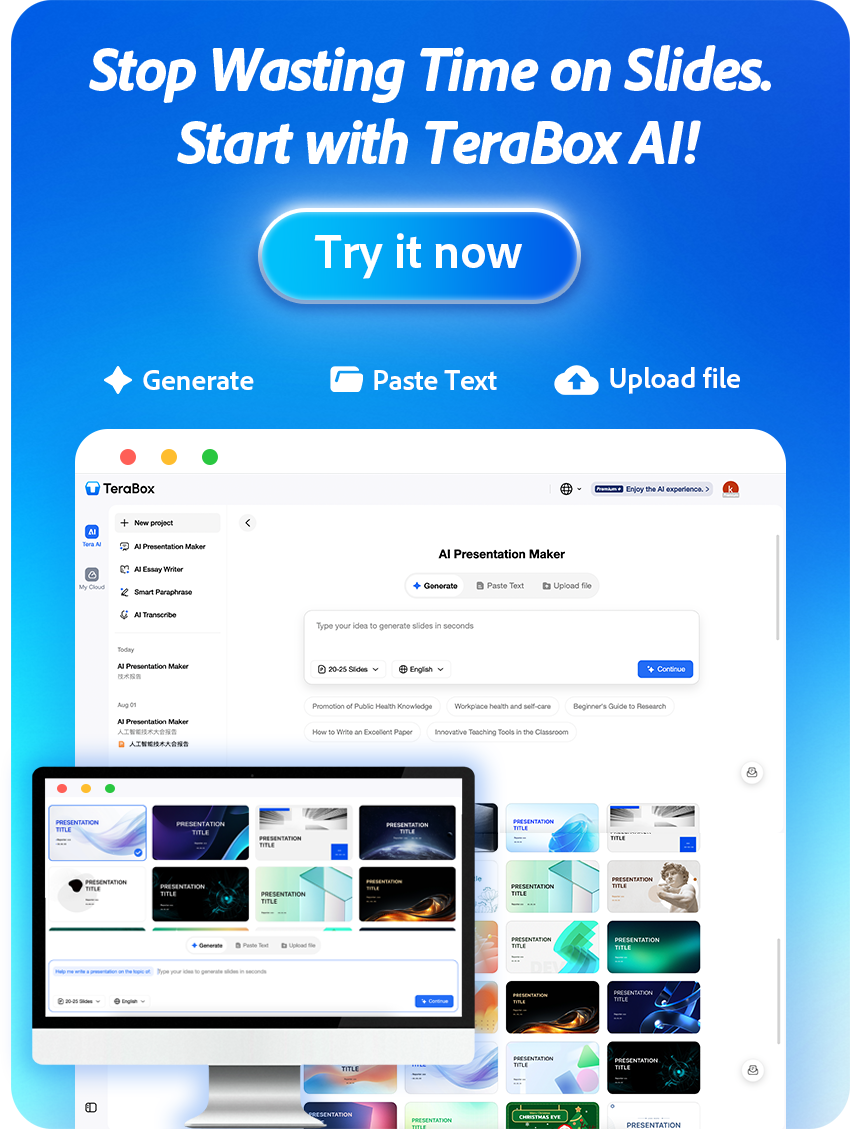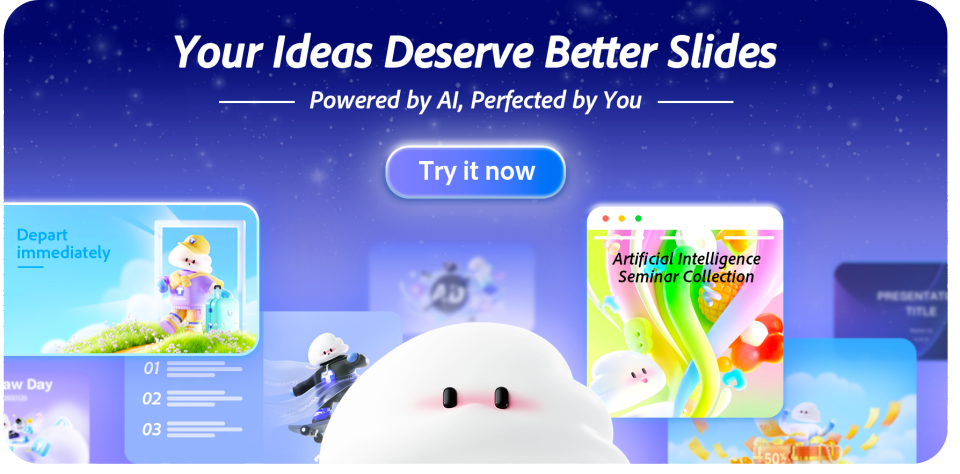Transitioning to a new position can be both exciting and daunting. When discussing good reasons for leaving a job, it’s essential to explain your motivations clearly in an interview so hiring managers see your career planning and the skills you bring. This article delivers practical tips, ready-to-use sample answers, and short templates to help you state the best reason for leaving a job with confidence and purpose.
Explaining why you are leaving a job is one of the most important moments in an interview. A well‑phrased reason signals professionalism, maturity, and clear career planning; by contrast, a poorly framed answer can damage your professional image and reduce your chances with an employer. This section explains why interviewers ask about your departure and promises practical tips, sample answers, and ready‑to‑use strategies to help you communicate confidently.
Focus your response on motivations and future goals rather than airing grievances. We’ll show how to turn common reasons for leaving into interview‑friendly narratives, how to weave in the skills you’ve gained, and when to use written vs. verbal disclosure. Read the Sample Answers and Handling Difficult Questions sections for copyable phrases and STAR‑method examples you can practice before your next interview.
Understanding the Concept of Leaving a Job
At its simplest, a good reason to leave a job shows planning, maturity, and alignment with your long‑term career goals. Interviewers ask about departures to understand your motivations, assess cultural fit, and judge whether a candidate will stay and grow in the new job. Framing your answer to reflect thoughtful decision‑making reassures employers that the move was strategic, not impulsive.
Reasons for leaving usually combine personal aims and external workplace forces: seeking better growth opportunities, needing a healthier work environment, or reacting to shifts in company culture or leadership. Distinguish positive from negative reasons: positive reasons (career growth, skill development, relocation for family) highlight progress; negative reasons (complaints about people, persistent conflict, personal issues overshared) raise concerns. Use positive reasons to demonstrate professional planning and readiness for the next role.

| Factor | Impact on Job Change |
|---|---|
| Personal Goals | Directs ambition toward relevant opportunities and role fit |
| Company Dynamics | Affects job satisfaction, engagement, and retention |
| Industry Standards | Encourages skill updates and adaptation to market demands |
| Skills & Development | Drives moves to roles that expand experience and responsibilities |
Quick examples — positive vs. negative (one line each):
- Positive: “I left to pursue a position with clearer growth opportunities that match my skills.”
- Negative to avoid: “I left because my manager was awful and the team didn’t get along.”
Common Good Reasons for Leaving a Job
When planning a career move, knowing the reasons for leaving that employers find credible helps you shape a concise, positive narrative. Below are widely accepted examples and guidance on which reasons interviewers view most favorably — plus quick tips tailored for entry‑level candidates and experienced professionals.
1)Present widely accepted examples
- Career growth: Seeking a role with clearer promotion paths or increased responsibility.
- Skill development: Moving to a position that builds new technical or leadership skills.
- Relocation: Moving for family, partner, or logistical reasons that require a new job.
- Cultural fit: Looking for a company culture or leadership style that better matches your values.
- New challenges / a new role: Wanting to tackle different problems, industries, or product areas.
2)Discuss which reasons are most favorable in interviews.
Interviewers tend to favor answers that emphasize opportunities, growth, and concrete skills you want to develop. Reasons framed around forward-looking goals — for example, “I wanted a position where I could lead projects and grow into people management” — show ambition and planning. Avoid vague statements or long complaints about prior company or colleagues; instead, explain how the new position better aligns with your career path.
3)Tailor advice for entry-level candidates versus experienced professionals.
Tips and short sample lines you can adapt:
- Entry-level candidatesFocus on learning and development: “I’m looking for a role that accelerates my skill development in [skill area].”
- Emphasize mentorship and exposure: “My goal is to join a team where I can learn from experienced colleagues and build hands‑on experience.”
- Sample 1‑line: “I left to find a position that offers more structured training and growth opportunities.”
- Experienced professionalsHighlight strategic moves: “I moved to pursue a role with broader scope and leadership responsibilities that match my career goals.”
- Show impact and trajectory: “I’m seeking a position where I can leverage my experience to drive product or process improvements.”
- Sample 1‑line: “After X years, I wanted a role that better matched my long‑term strategy for leadership and cross‑functional work.”
Want ready‑made phrasing? See the Sample Answers section for copy‑and‑paste templates that fit these reasons and are easy to customize for your next interview.

How to Frame Your Reason Positively
How you explain a job change matters as much as the reason itself. Use positive framing to turn your departure into proof of thoughtful career planning and professional growth. Employers respond best to answers that focus on opportunities and the skills you gained, not complaints about past roles.
1)Use constructive language that emphasizes career advancement instead of complaints.
- Do: “I enjoyed my time there and am ready to take on a role with more responsibility and impact.”
- Don’t: “I left because the company was awful.”
- Why it works: Constructive language positions the move as proactive — emphasizing development and future contribution rather than airing grievances.
2)Connect past experiences with future goals.
Frame your past role as preparation for the next one. Briefly link a concrete skill or achievement to the responsibilities of the new role so the interviewer sees continuity and purpose.
- Template: “In my last job I did [specific task], which helped me build [skill]. I’m now looking for a position where I can apply that skill to [future goal].”
- Example: “Leading cross‑functional launches helped me improve stakeholder management; I’m seeking a role that expands that responsibility into product strategy.”
3)Provide sample phrases illustrating the best reason for leaving a job.
Quick, copy‑and‑customize lines for common scenarios — keep answers 30–60 seconds and end with how you’ll contribute to the prospective employer:
- Career growth: “I left to pursue opportunities with clearer paths to leadership and to grow my strategic experience.”
- Skill development: “I wanted a role where I could deepen my technical skills in [skill area] and apply them to larger projects.”
- Role mismatch (seeking new responsibilities): “I enjoyed the team but my interests shifted toward [area]; I’m looking for a position that lets me focus on that work.”
- Relocation: “Due to a family move, I’m seeking a role local to [city] where I can contribute my experience to a new team.”
- Culture / fit: “I’m looking for a company culture that values [value], which I believe aligns with how I do my best work.”
Tips for delivery: speak calmly, keep the tone positive, and tie every reason back to what you will do for the new job. Copy any of the short templates above and swap the bracketed sections to match your situation — then practice them until they feel natural.

Tailoring Your Reason to the Employer
When you explain why you left a previous job, tailoring your response to the specific company culture and role makes your answer feel authentic and relevant. Do quick research—read the company website, recent news, and the job description—to learn what the employer values. Then highlight aspects of your background that show you’ll fit the team and contribute from day one.
1)Adjust your answer according to the company culture and role requirements.
- Do: Match language in the job posting (e.g., “collaboration,” “fast‑paced,” “data‑driven”) and emphasize experiences that demonstrate those qualities.
- Don’t: Use a one‑size‑fits‑all reply — generic answers can sound insincere.
- Quick script examples:
- Startup (innovation focus): “I wanted to join a smaller, fast‑moving team where I could iterate quickly and help shape product direction.”
- Large enterprise (process/leadership): “I’m seeking a role that lets me scale processes and mentor others across teams.”
- Nonprofit (values-driven): “I wanted work that aligns with my values and lets me contribute to mission‑driven outcomes.”
2)Avoid negative remarks about previous employers; highlight transferable skills and learning intentions.
Never bash a former company or manager. Instead, translate past challenges into positive takeaways by naming the skills you developed and how you’ll use them in the new role. For example: “My last position helped me sharpen stakeholder management and analytical skills; I’m excited to bring that experience to a team that values cross‑functional collaboration.” This shows maturity and a learning mindset.
3)Tips for naturally incorporating what is a good reason for leaving a job in your response.
- Start with a brief context sentence (1–2 lines), then state the positive reason and end with what you’ll contribute: Context → Reason → Contribution.
- Keep it concise (30–60 seconds) and tie the reason to the job’s requirements to demonstrate clear fit.
- Sample natural line: “After gaining experience in X, I’m now looking for a position where I can use those skills to [specific contribution], which is why this role is such a strong fit.”

Avoiding Common Mistakes When Explaining Your Career Move
When you explain why you left a previous job, avoiding common pitfalls makes the difference between a weak and a strong answer. Interviewers notice tone and detail — mistakes can hurt your credibility with employers. Below are the frequent errors to watch for, corrected phrasing you can use instead, and quick practice tips.
Common errors and how to fix them
- Complaining about people or the company.Wrong: “My manager was terrible and the team was dysfunctional.”
- Right: “The role wasn’t the right fit for my strengths, so I looked for a position where I can contribute more effectively.”
- Exaggerating or fabricating details.Wrong: Inflating achievements or dates to cover gaps.
- Right: Be concise and factual — “I led a project that improved process X; here’s the result.”
- Being vague or evasive.Wrong: “It just wasn’t working out.”
- Right: Give a brief, specific reason: “I wanted more growth opportunities in [area], which weren’t available in that position.”
- Revealing overly personal issues.Wrong: Sharing private family or health details that aren’t relevant.
- Right: Keep it professional and succinct: “A personal relocation required me to seek new local opportunities.”
Short corrective scripts you can use
- “I enjoyed my time at X, I learned [skill], and I’m now seeking a role that lets me apply that skill to [impact].”
- “After evaluating my goals, I decided to pursue opportunities that offer clearer growth and leadership tracks.”
Quick practice checklist
- Prepare 2–3 concise reasons tied to skills and goals.
- Avoid blame; translate negatives into lessons learned.
- Keep answers 30–60 seconds and end on future contribution.
- Practice with the STAR framework for follow‑ups (see Handling Difficult Questions).
Role‑play tip: Have a friend ask follow‑ups (e.g., “Why leave after one year?”) and practice steering answers to growth and fit. For ready phrases, go to the Sample Answers section and copy templates you can personalize for your next interview.
Sample Answers for Different Scenarios
Practice short, specific answers so your reason for leaving sounds natural and relevant to the new position. Aim for 30–60 seconds: give brief context, state the positive reason, and finish with what you’ll bring to the team. Below are editable examples and copy‑and‑paste templates for common situations.
1)Career change: highlight learning new skills and industry interests.
Template (1–2 sentences): “I decided to change my career direction to focus on [new field]. I’ve completed courses in [skill] and gained practical experience through [project/course], and I’m eager to apply those skills in a full‑time role.”
Fill‑in‑the‑blank example: “I’m transitioning into [new field] after taking courses in [skill]; I want to use that experience to help a team build [outcome].”
Do: Mention concrete training or projects. Don’t: Say you’re “bored” or simply “wanted something different.”
2)Limited growth opportunities: emphasize seeking challenges and advancement.
Template (1–2 sentences): “I valued my time at [company], but after [years/period] it became clear the position didn’t offer the growth opportunities I’m ready for. I’m now pursuing roles that provide stretch assignments and leadership pathways.”
Fill‑in‑the‑blank example: “After X years at [company], I’m looking for a role with clearer advancement and bigger scope in [area].”
Do: Focus on development and goals. Don’t: Complain about pay or people as the primary reason.
3)Relocation or personal reasons: explain professionally, concisely, and positively.
Template (1–2 sentences): “Due to a family relocation, I’m seeking opportunities local to [city]. I see this as a chance to contribute my [skill/experience] to a new team and community.”
Fill‑in‑the‑blank example: “I relocated to [city] for family reasons and am looking for a role where I can apply my experience in [skill].”
Do: Keep personal details minimal and professional. Don’t: Overshare private matters.
4)Poor cultural fit or role mismatch: frame as looking for better alignment.
Template (1–2 sentences): “My strengths are in [skill/approach], and I realized I’d be more effective in an environment that values [value]. I’m excited about this role because it aligns with that way of working.”
Fill‑in‑the‑blank example: “The prior role didn’t fully match my strengths in [skill], so I’m pursuing positions that emphasize [value/approach].”
Do: Link fit to your productivity and contribution. Don’t: Criticize former colleagues or leadership.
5)Salary, benefits or short contract end (use carefully)
Template (1–2 sentences): “My contract ended after [period], and I’m now looking for a permanent position that offers growth and stability. I’m particularly interested in roles that allow me to expand my [skill].”
Fill‑in‑the‑blank example: “After a contract ended, I’m pursuing a full‑time role focused on [skill/area].”
Do: If you mention compensation, keep it factual and secondary to growth. Don’t: Lead with money as the sole motive.
How to weave the reason naturally into answers
- Start: One brief context line (“After X years…”).
- Reason: One clear positive reason (“I wanted greater growth/skill development/fit”).
- Close: One line about contribution (“I can bring [skill] to help [company objective]”).
Use these examples as a base — swap the bracketed items to reflect your situation, practice aloud, and time yourself. For longer follow‑ups, see the Handling Difficult Questions section for a STAR‑based example you can adapt.
Handling Difficult Questions About Leaving
Probing questions about why you left a previous job are common in interviews. Stay calm, listen, and respond with a short, structured answer that focuses on learning and future contribution. Using a reliable structure — pause, use the STAR method, then close on how you’ll add value — helps you turn a tricky question into a strength.
Simple 3‑step approach
- Pause & think: Take a breath to collect your thoughts; a short pause shows composure.
- Use STAR to structure a concise response: Situation → Task → Action → Result.
- End on future focus: Finish by explaining how the experience prepares you for this role and benefits the employer.
STAR-modeled example: “Why did you leave after 2 years?”
Situation: “At Company X, I was part of a small product team.”br> Task: “After two years, I was asked to take on more strategic responsibilities.”br> Action: “I sought out cross‑functional projects and led a pilot to improve onboarding metrics.”br> Result: “We reduced time‑to‑productivity by 20%. After achieving those goals, I realized my next step was a role with broader product strategy responsibility — which is why I left.”
This concise STAR response explains context, shows impact with a measurable result, and ties the departure to a career goal.
Redirect scripts for pushed follow‑ups
- If asked for negative details: “I’d rather focus on what I learned and how I grew — for example, I improved X skill and achieved Y.”
- If asked about dates/gaps: “During that period I focused on [training/contract work/personal relocation], which prepared me for roles like this one.”
- If pressed on conflict: “I prefer to highlight the constructive outcomes — how I managed the situation and what I learned.”
Micro‑tips on delivery
- Keep answers to roughly 45–90 seconds for STAR responses.
- Maintain even tone and steady eye contact; avoid sounding defensive.
- Use specific skills and results to back up your statements — numbers or concrete outcomes make answers stronger.
Practicing a few STAR stories about your most relevant experience will prepare you to handle difficult questions smoothly and show that your career choices are thoughtful and skill‑driven.
When to Disclose Your Reason in Writing vs Verbally
Knowing when to share your reason for leaving a job — on paper or in person — can shape how recruiters and hiring managers view your candidacy. Use written disclosures for formal, initial contexts and verbal disclosures when you need to read reactions, add nuance, or connect personally during an interview. Below are practical templates and short scripts for each common situation.
Written: application, cover letter, follow‑up emails
- Cover letter sentence (short): “After several productive years at [Company], I’m pursuing a new position that offers greater opportunities to grow my [skill] and contribute to [type of work].”
- Application note (concise): “Seeking new opportunities that better match my long‑term career goals in [area].”
- Follow‑up email line: “As discussed, I left my previous role to focus on opportunities that expand my [skill/experience]; I’m excited about how this position aligns with that goal.”
Verbal: interviews, networking, recruiter calls
- One‑line interview opener: “I left to pursue roles with clearer growth and leadership opportunities that match my career goals.”
- If asked for a brief reason on a call: “I relocated for family reasons and am now looking for a role where I can apply my experience in [skill] locally.”
Context table with actionable snippets
| Context | Preferred Method | Sample Snippet |
|---|---|---|
| Application submission | Writing | “Seeking opportunities aligned with my long-term career goals in [area].” |
| Job interview | Verbal | “I’m looking for a role that lets me use my [skill] to drive [outcome].” |
| Follow-up communication | Writing | “I left to focus on opportunities that grow my leadership and technical experience.” |
| Networking events | Verbal | “I recently transitioned out of X to pursue new challenges in [field].” |
LinkedIn / recommendation letter guidance
- LinkedIn summary line: “Experienced [role] shifting into [new focus] to expand skills in [area] and drive measurable outcomes.” Keep it positive and future‑focused.
- Recommendation letter phrasing (short): “Left to pursue a position that better matched long‑term goals; demonstrated strong skills in [skill] while with us.”
General tips: keep written explanations concise and professional (one sentence), use verbal answers to add brief context and highlight what you’ll contribute to the new employer, and always tie the reason back to the opportunity the new position offers.
Leveraging Your Reason for Career Growth
Leaving a role can be positioned as a strategic step in your career when you frame it around learning, expanded responsibility, and clear future goals. Hiring managers look for candidates who use past moves to demonstrate adaptability, continuous development, and a focus on long‑term impact. When explained correctly, your reason for leaving becomes evidence of proactive career planning rather than a red flag.
Concrete ways to spin a departure into growth:
- Upskilling: “I left to deepen my technical skills in [technology/tool], which I’ve since applied to [outcome].”
- Leadership stretch: “I pursued roles with more people leadership and cross‑functional responsibility to prepare for senior positions.”
- Lateral moves for breadth: “I took a lateral move to gain exposure to [function], which broadened my perspective and skillset.”
- New technologies or markets: “I transitioned to build experience in [industry/market], positioning me to contribute in emerging areas.”
Three short “leveraging” lines you can adapt (skill + impact + future‑fit):
- “I expanded my analytics skills to shorten decision cycles and now want to apply that capability to influence product strategy.”
- “I led a cross‑team initiative that improved customer retention; I’m seeking a role where I can scale those results.”
- “After gaining experience in X, I’m focusing on roles that let me use those skills to drive operational improvements at a larger company.”
Short before → after example:
“Before: I managed reporting processes at a small firm and had limited scope. After: I pursued a role that added stakeholder management and project leadership; I then led a project that cut delivery time by 15%. Framing the move this way shows employers how each step built capabilities that matter for the next job.”
Final tips: always tie the skill or experience you gained to the opportunities the prospective employer needs. Mention specific development outcomes (new tools, leadership experiences, measurable results) to make your reason for leaving concrete and compelling — and to show you’re ready to contribute from day one.
Conclusion
Choosing and explaining a thoughtful reason for leaving a job matters. The way you communicate that reason shapes your overall career narrative and influences how an employer perceives your professionalism and fit. Strategic, positive language — backed by concrete examples and a focus on growth — turns a departure into evidence of planning and development, not a liability.
Next steps: draft a 30–60 second answer using the sample templates above, practice it aloud, and prepare one STAR story that supports your reason. This preparation builds the clarity and confidence you need to handle both routine and difficult questions in an interview.
One‑sentence takeaway: present your move as a deliberate step toward your goals, tie it to the skills and impact you bring, and deliver the story with calm confidence. Use the templates and sample answers in this article to write and rehearse your personalized response today.











